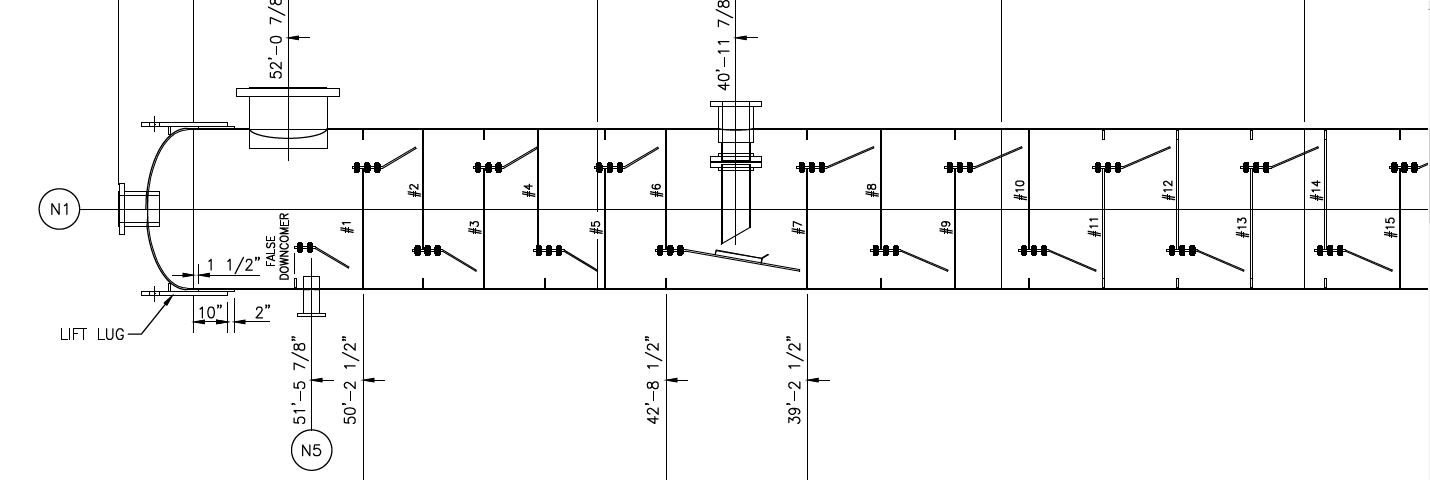Dissolved gas (i.e. light hydrocarbon components such as methane (C1), ethane (C2), etc.) must be removed from the wellhead, crude oil, or natural gas condensates so that the liquid product can meet the typical specifications such as vapor pressure and/or individual component concentrations. To be safely transported and stored at atmospheric conditions, the oil should essentially be free of the most volatile hydrocarbons. The removal of these dissolved natural gas components from crude oil, condensate, and NGL is performed through a process called “stabilization”.
Economic Goal of Stabilization
Crude oil and natural gas condensates often contain a considerable amount of dissolved gas. Hydrocarbons are usually worth more when they are in the liquid phase than in the vapor or natural gas phase. Therefore, the economic goal of condensate stabilization is to maximize the liquid recovery while meeting the vapor pressure and liquid concentration requirements.
The Reid vapor pressure of the crude oil and condensate is typically set in the range of 9-12 PSIA. To achieve this, light hydrocarbons such as C1, C2, and C3 will be completely removed while leaving the maximum amount of C4, C5, and heavier components in the liquid phase. The Y-Grade product is produced by controlling the CO2 and C1 concentration of the liquid phase and maintaining the vapor pressure of the liquid product.
Stabilization Methods
To reduce the volatility and promote liquid recovery, hydrocarbon liquids may be passed through a stabilizer column that effectively manages the multiple flashes of the product. This allows the volatile light ends to make their way up the stabilizer column (vapor product) while the heavy hydrocarbons in the stabilized product are sent to storage tanks or the liquid sales pipeline (liquid product).

Alternatively, the liquid hydrocarbons may be passed through a two-tower stabilizer or a series of fractionation columns to produce various components such as ethane (C2), propane (C3), Y-grade NGL, and butane (C4). When the hydrocarbon components are separated, they also become more valuable.
Stabilization Process
The simple stabilizer system usually consists of a feed-bottom exchanger (to maximize the heating efficiency and minimize the fuel gas consumption and product cooling cost), a stabilizer column with valve trays (for vapor-liquid contacting), reboiler (to warm up the hydrocarbon liquids and vaporize the light hydrocarbons using a heat medium), and a product cooler (to reduce the temperature of liquid products to around 120 oF). Hot vapor, which is produced in the reboiler, flows up the column, stripping out the light hydrocarbons (e.g. C1, C2, C3, etc.) from the relatively colder liquid stream flowing down from the top of the tower to produce a stabilized liquid product. The overhead vapors may be used as fuel gas or recompressed into the sales gas pipeline or the front of a gas processing facility.
Kinder Morgan Treating LP (KMT) offers competitive pricing on movable modular Stabilizer units in standard packages or custom-designed packages. KMT’s standard stabilizer units are made in different capacities up to 25,000 barrels per day. These packages include full engineering and design, drafting, fabrication, and can also include installation and operation support. KMT’s customer-dedicated support service is unparalleled in the industry.
Contact Kinder Morgan for a Complete List of Services
Contact us for information and products that can help with hydrocarbon liquid stabilization. Call Kinder Morgan Treating at 713-369-8544 or 713-369-8535 today. We have dedicated project managers ready to work with you to meet all of your needs.
